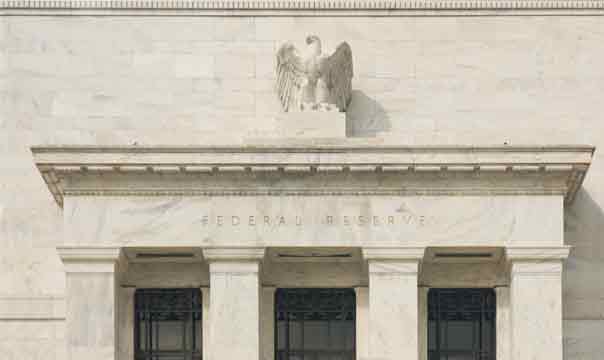
FDIC-Insured - Backed by the full faith and credit of the U.S. Government

Key takeaways
Supply chain challenges played a major role in inflation’s resurgence beginning in 2021.
However, supply chain problems began to subside in the closing months of 2022.
How the issue continues to play out will likely affect the coming months’ inflation trends.
Although the inflation picture has improved since peaking in June 2022 (with living costs rising at a 9.1% rate for the previous 12-month period), challenges remain. Supply chain shortfalls were a major concern during inflation’s surge that began in early 2021. This represented a shortage of commodities, parts or products that created an imbalance in supply and demand, forcing prices higher.
“Higher inflation reflected a restricted supply of goods at the same time that there was strong demand for many of those same goods,” says Tom Hainlin, national investment strategist at U.S. Bank. Energy and food products were leading drivers as inflation soared. The war between Russia and Ukraine exacerbated the challenges. Russia is a major energy supplier and both countries are major agricultural exporters. For a time, the war interrupted some shipments of commodities from both Russia and Ukraine. China’s dramatic COVID-19 lockdown policies, which were in place for an extended period of time, hampered manufacture and shipment of goods from Chinese firms.
Yet supply chain issues affecting a wider range of products also contributed to the problem. Some companies had difficulty keeping up with demand, sourcing components needed to manufacture products or finding enough workers to fill production needs. In addition, transportation challenges mounted, including a backup of shipping traffic in some ports and a shortage of truckers to haul freight over long distances.
What role might supply chain issues play going forward and what could it mean for the markets?
A pandemic casualty
Supply chain issues first emerged early in the 2020 COVID-19 pandemic. Governments forced many businesses to temporarily close to limit the spread of the virus, except those deemed “essential” services. At the same time, emergency government policies provided financial support to consumers and businesses to assist them through the pandemic’s economic challenges.
Household balance sheets improved with the support of these policies. Consumers, unable to spend money on services and leisure activities (such as eating out, visits to health clubs and travel) instead directed their discretionary cash toward goods, such as exercise equipment, home improvement projects and new homes to adjust to the ‘work from home’ culture. This surge in demand for specific segments of the economy outpaced supplies. Pandemic-related business interruptions limited production, creating a scarcity of desired goods.
During the early stages of this surge, supply-chain issues developed. Accelerating inflation became evident in early 2021 and issues intensified into 2022. In March 2022, the Federal Reserve (Fed) took aggressive steps to cool demand, such as raising short-term interest rates. While that effort sought to lessen dampen spending on the demand side of the equation, Hainlin notes that the Fed has little control over the supply side.
Commodities markets adjust
Over time, aspects of the supply-chain situation improved, and became less of a hindrance to the global economy. This was evident in broader commodity markets by the end of 2022. For example, in the spring of 2021, there were significant shortages of building materials, hindering construction of new homes and remodeling projects for existing homeowners. That drove prices of lumber and other materials dramatically higher. Since that time, according to surveys of contractors in the construction trades, availability of some products, including lumber, showed substantial improvement.1 As supplies improved, prices came down. Publicly traded lumber futures contracts, which topped out at more than $1,500/thousand board feet in May 2021, and remained as high as $1,400/thousand board feet in early 2022, dropped to $373.70/thousand board feet by the end of 2022, staying under the $400 level in early 2023.2 However, if supply should again become a challenge, it could impact construction prices in the future.
“Although prices are down, supply remains an issue in the energy sector.”
Rob Haworth, senior investment strategy director at U.S. Bank Wealth Management
Similar trends occurred in the energy sector. The price of a barrel of crude oil topped out at $123.70 in March 2022. For a period of several months, Americans paid much higher gasoline prices than they had over the prior two years. However, President Biden released some of the nation’s Strategic Petroleum Reserve to boost supplies, demand eased and fears of a Russian supply crunch subsided, helping bring prices down. As of mid-February 2023, oil stood at approximately $78/barrel, a drop of 37% from its peak.3
“Although prices are down, supply remains an issue in the energy sector,” says Rob Haworth, senior investment strategy director at U.S. Bank Wealth Management. “We’ve significantly tapped the Strategic Petroleum Reserve, and any further supply constraint creates a meaningful risk that prices could begin to trend higher again.” Since the fall of 2022, however, prices have held relatively steady.
Chip shortage
Another prominent story related to supply chain issues was the so-called “chip shortage” referring to a lack of semiconductor components for various purposes. These “chips” play an increasingly important role in a variety of products. Dating back to late 2020, orders for chips were backlogged, causing a delay in the completion of many products. The most notably affected sector is the automobile industry.
“Semiconductor components are critical to automobile production today,” says Hainlin. “With production delayed due to a lack of available chips, the supply of vehicles dropped and prices rose.” Higher costs for new and used cars were another major contributor to the rapid increase in the overall inflation rate. Reports in early 2023 indicate an easing of the chip shortage, which may be due in part to a global economic slowdown.4
Most semiconductors come from firms based in Taiwan and South Korea. In the summer of 2022, President Biden signed the CHIPS and Science Act of 2022 into law, incentivizing construction of domestic semiconductor manufacturing plants. It includes a commitment of $52 billion to support the development of the semiconductor industry in the U.S. “New factories are under construction in the U.S.,” says Haworth, “but it will likely be 3-4 years before they are up and running.” While not a quick fix to chip supply concerns, it may provide more long-term supply-chain security in the semiconductor market.
Labor issues domestically and overseas
Hainlin attributes domestic supply constraints, in large part, to labor shortages, as unemployment lingers near historic lows and job openings remain high. “The major challenge for many employers is whether they can attract and retain sufficient quality labor to meet their production demands.” Hainlin says this problem spans industries from manufacturing facilities to airlines to transportation services like trucking and port operations.
The current imbalance between available workers and the number of open positions could result in rising wages to attract workers. Wage growth slowed modestly toward the end of 2022. This remains a major variable that might impact the future direction of inflation.
Similarly, the lack of production activity in China due to its now revoked “zero COVID” policy kept many workers from producing materials used by global manufacturers. Now that China has eased restrictions, a question is at what point can it regain normal economic activity to help alleviate global supply chain issues. “They are reopening the economy without a solid COVID vaccine in place, but instead relying on ‘herd immunity’ to help them move past the pandemic,” notes Haworth. “It’s not clear how this will affect China’s economy if significant infection rates linger over an extended period of time.”
Where we go from here
Easing supply chain issues in the second half of 2022 appeared to contribute to inflation’s slower pace of growth. “We’re seeing those supply-chain problems significantly mitigate, inventories are being built, shipping costs have come down,” said U.S. Treasury secretary Janet Yellen. “And so that part of inflation is no longer really contributing very significantly.”5
A new issue that might affect the flow of goods from China developed in early 2023 with the emergence of an alleged spy balloon that floated over the U.S. and was shot down in February. It could exacerbate tensions between China and the U.S., which might spread to the business sector. For now, this matter hasn’t contributed to supply chain disruptions, but the situation bears watching.
The Federal Reserve, meanwhile, remains focused on bringing inflation down to its target range of 2% (it stood at 6.5% at the end of 2022). The Fed raised the short-term target federal funds rate by 4.50% in a little less than a year, beginning in March 2022. Modest additional rate hikes are anticipated in 2023. The Fed’s goal is to dampen demand, aimed in part at easing supply pressures.
Pent-up demand among U.S consumers leading to an inflation-triggering supply and demand imbalance beginning in 2021 appears to have subsided. The consumer demand recovery in other parts of the world lags behind the U.S. “There may be a supply ramp-up in China with its COVID lockdown policy at an end,” says Haworth, “but there is not a comparable pent-up demand cycle in place in China or in Europe as was the case in the U.S. previously.” Haworth notes that significant government stimulus programs helped boost consumer demand in the U.S. are not in place elsewhere in the world, which may limit the degree to which demand rebounds overseas.
Market participants are closely monitoring the Fed and other central banks around the world to see if they can achieve a tamer inflation environment without triggering a serious recession. In the U.S., the confluence of interest rates, inflation and corporate profit growth are three key factors for investors to monitor in the months ahead, as the rate of economic growth will likely be reflected in corporate earnings and stock prices.
Talk with your wealth planning professional to determine how economic developments such as inflation trends may impact your own investment strategy and your long-term financial goals.
Tags:
Related articles

Analysis: How persistent might inflation be?
Inflation spiked sharply over the past year. Learn what this could mean for your finances and if there’s any end in sight to higher prices.

Federal Reserve recalibrates monetary policy to fight inflation
With the Federal Reserve raising short-term interest rates and no longer providing liquidity to the bond market, investors should prepare for change as the Fed intensifies its focus on fighting inflation.
